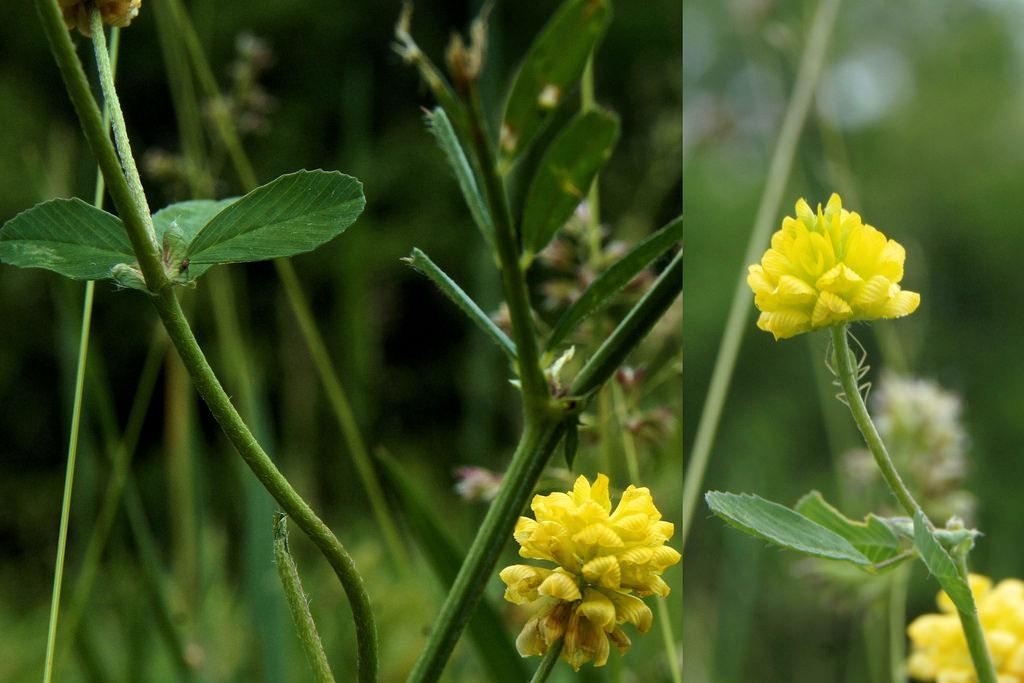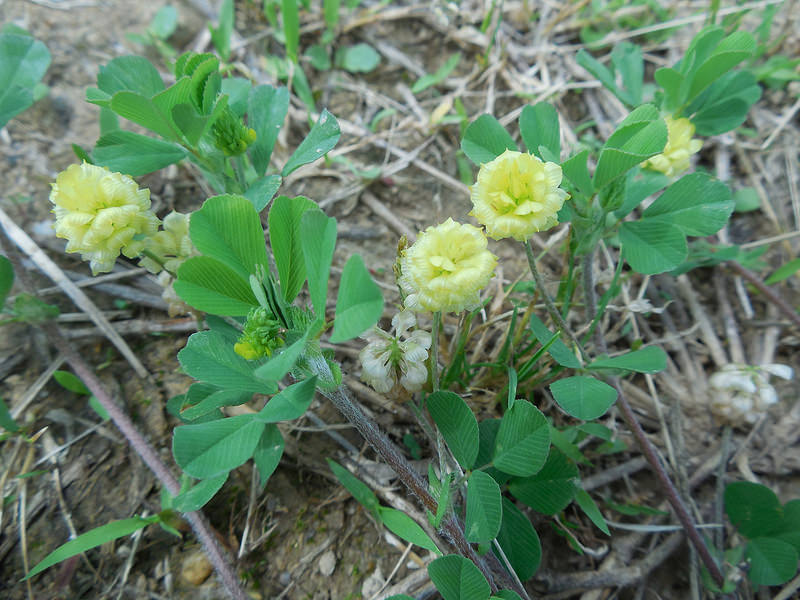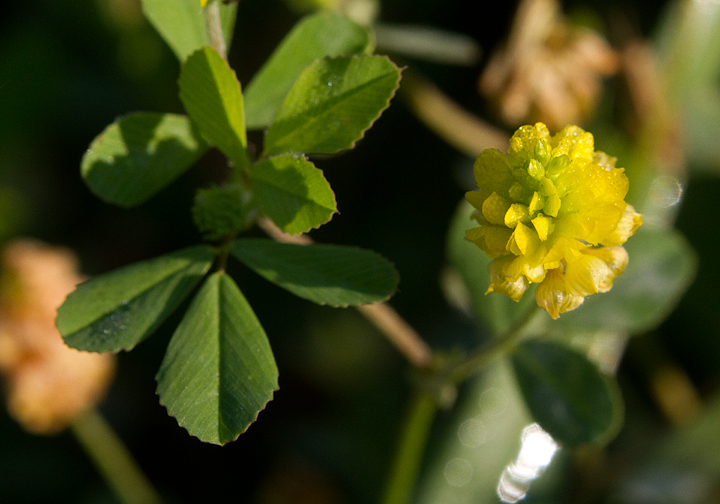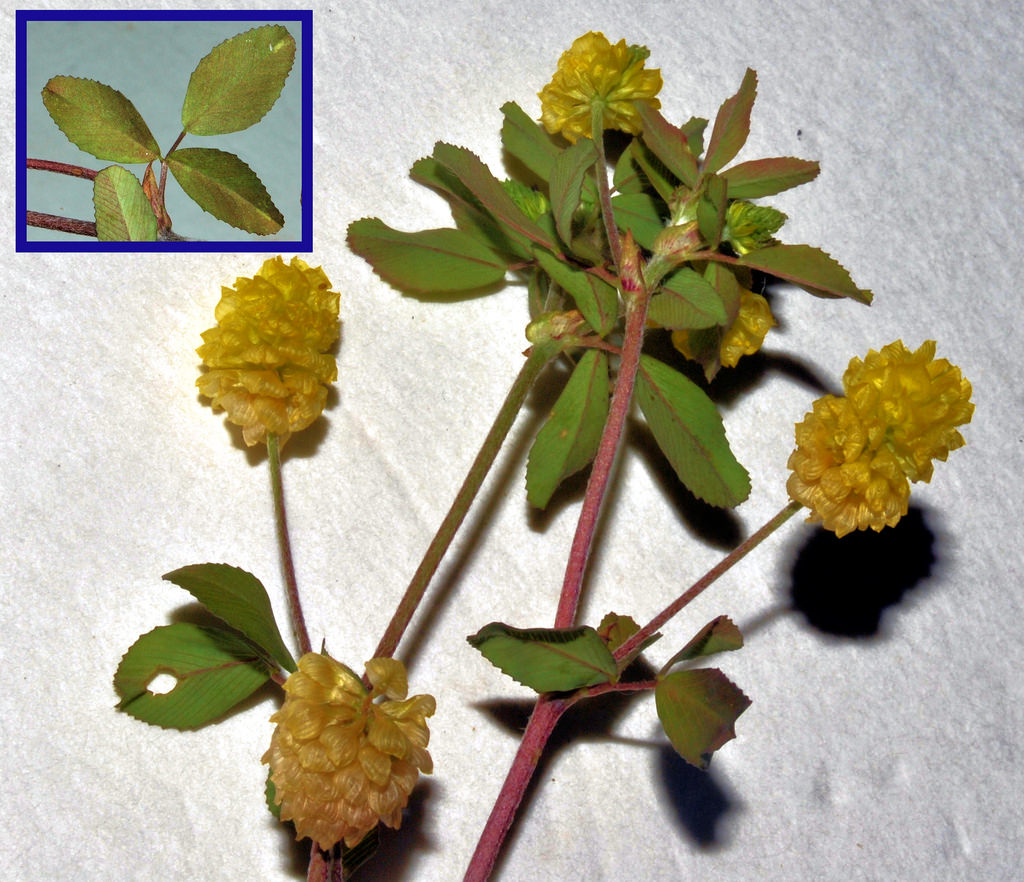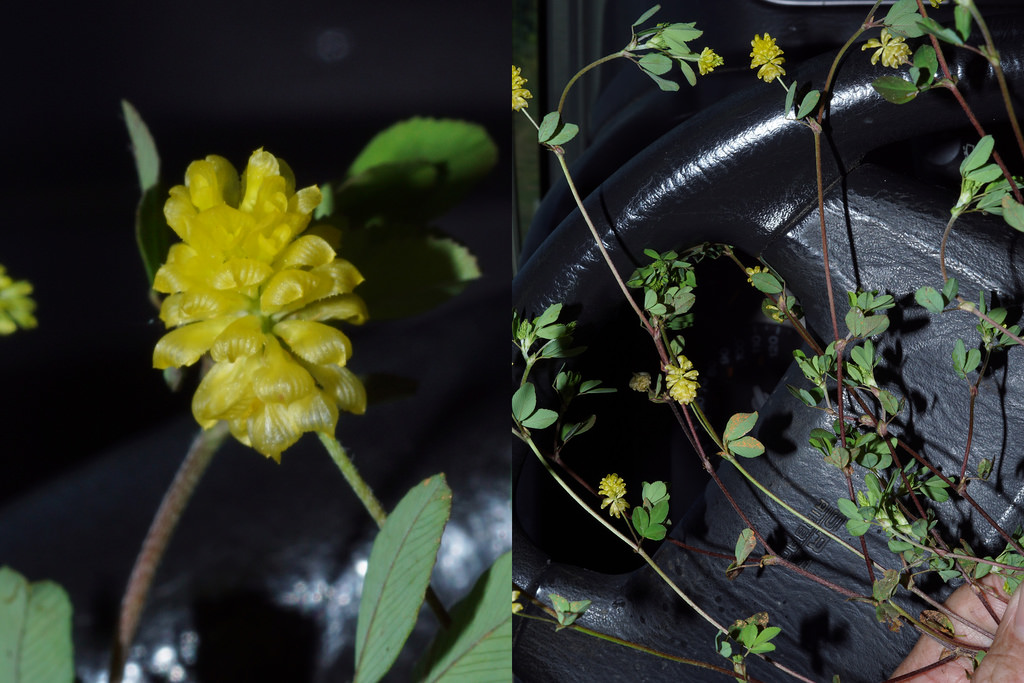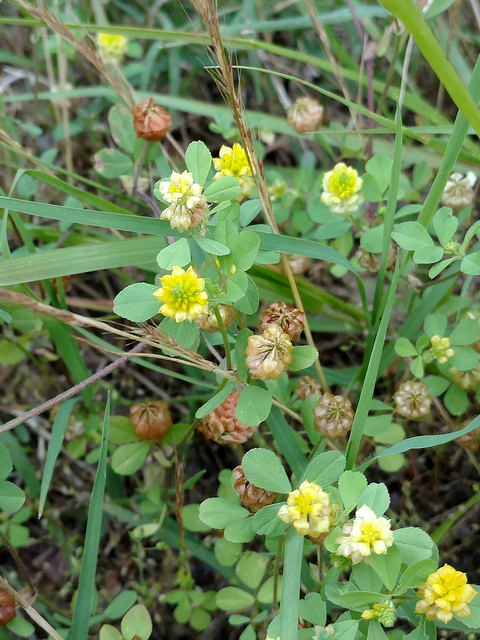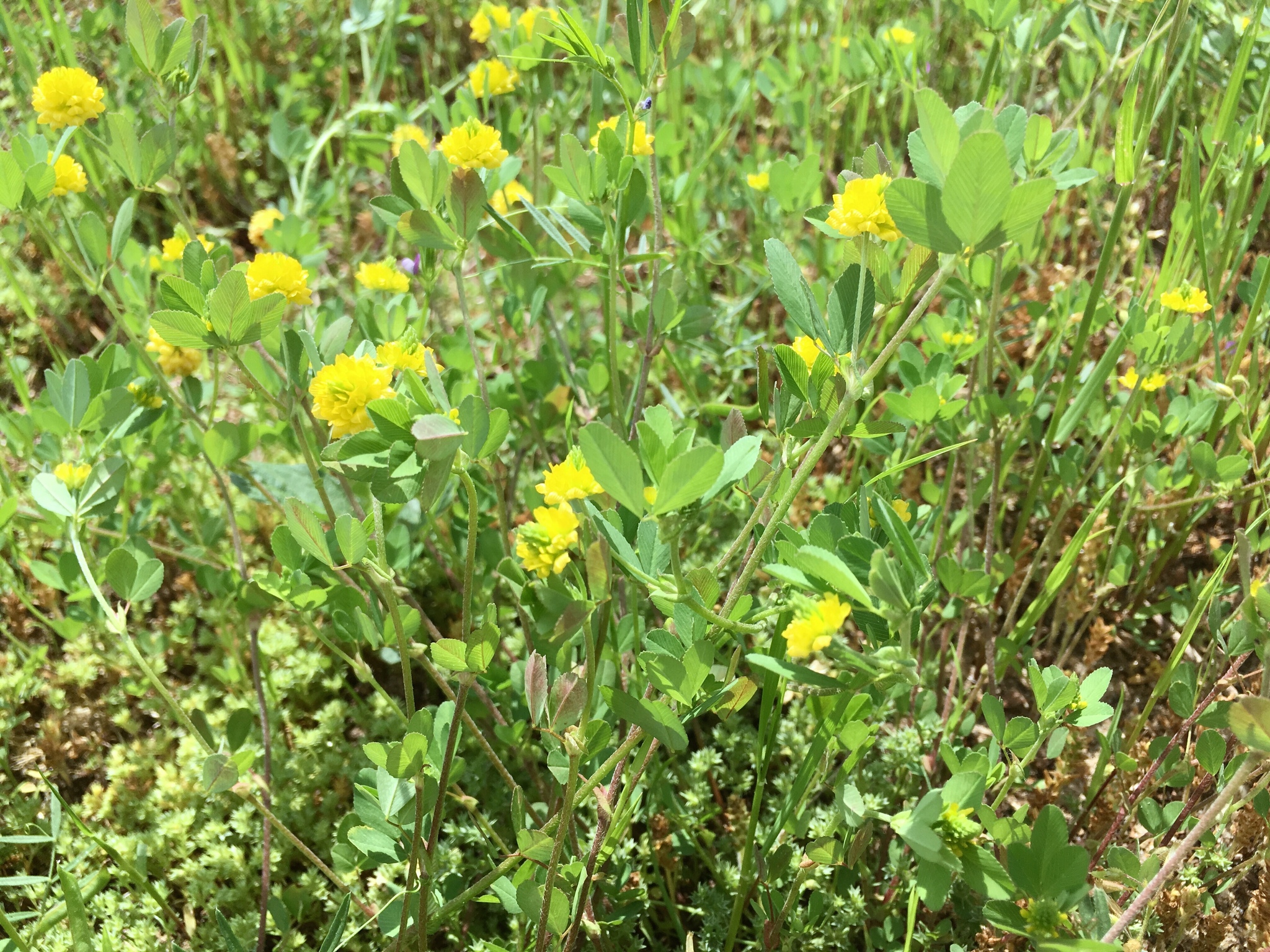Map Snapshot

























290 Records
Status
Field Clover is an introduced plant from Europe, western Asia, and north Africa. In North America, it has become established across most of the eastern United States east of the Mississippi and along the west coast. It has been recorded in every state. In Maryland, Field Clover is a common plant across the state. It blooms during May and June. According to the Smithsonian's Flora of the Washington-Baltimore Area special collection, the earliest collected specimen in the Maryland area is from along the Potomac River in present-day Georgetown. The collection was made by John Chickering in 1874.
Description
Similar to Black Medick, but leaflets do not have mucronate points. Upper flower petals are grooved while Black Medick upper flower petals are smooth. Golden Clover has a larger flowering head and all three leaflets are sessile, unlike Field Clover, which has a central leaflet with a petiole over 1 mm (typically 3 mm). Suckling Clover has a very small flowering head with fewer than 15 flowers and the center leaflet has a very short petiole (less than 1mm).
Where To Find
The species name "campestre" means of the fields and this is the place to look for Field Clover. Roadsides, open spaces without tall vegetation and lots of sun, yards, parking lot edges, and fallow fields are all good places to look for Field Clover.
Seasonality Snapshot
Source: Wikipedia
| Hop Trefoil | |
|---|---|

| |
| Scientific classification | |
| Kingdom: | Plantae |
| Clade: | Tracheophytes |
| Clade: | Angiosperms |
| Clade: | Eudicots |
| Clade: | Rosids |
| Order: | Fabales |
| Family: | Fabaceae |
| Subfamily: | Faboideae |
| Genus: | Trifolium |
| Species: | T. campestre
|
| Binomial name | |
| Trifolium campestre | |
Trifolium campestre, commonly known as hop trefoil,[1] field clover[2] and low hop clover, is a species of flowering plant native to Europe and western Asia, growing in dry, sandy grassland habitats, fields, woodland margins, roadsides, wastelands and cultivated land. The species name campestre means "of the fields".
Description
[edit]It is a herbaceous annual plant, growing to 10–30 cm tall, with distinctive yellow flowerheads that superficially resemble hop flowers. Each flowerhead is a cylindrical or spherical collection of 20–40 individual flowers. The flowers become brown upon aging and drying, enclosing the fruit, a one-seeded pod. The leaves are alternate and trifoliate, with three oblong or elliptical leaflets 4–10 mm long.
This species is very closely related to large hop trefoil (Trifolium aureum).
Cultivation and uses
[edit]

Hop trefoil is an important clover in agriculture because its foliage is good for feeding livestock and replenishing soil. It is not generally planted, but is considered a valuable herb when found growing in a pasture. It has become naturalised in North America, particularly in the west and south of the continent.
Similar plants
[edit]Hop trefoil, Trifolium campestre, may be confused with other plants that have three leaflets and small yellow flowers, such as large hop trefoil (T. aureum), lesser hop trefoil (T. dubium), black medick (Medicago lupulina), and yellow woodsorrel (Oxalis stricta).
References
[edit]- ^ BSBI List 2007 (xls). Botanical Society of Britain and Ireland. Archived from the original (xls) on 2015-06-26. Retrieved 2014-10-17.
- ^ NRCS. "Trifolium campestre". PLANTS Database. United States Department of Agriculture (USDA). Retrieved 15 December 2015.
- Ajilvsgi, Geyata. (2003). Wildflowers of Texas. Shearer Publishing, Fredericksburg, Texas. ISBN 0-940672-73-1.
External links
[edit]![]() Media related to Trifolium campestre at Wikimedia Commons
Media related to Trifolium campestre at Wikimedia Commons
- Washington Burke Museum
- Jepson Manual Treatment
- Illinois Wildflowers
- Discover Life: Trifolium campestre
- Purdue New Crops: Hop clovers
